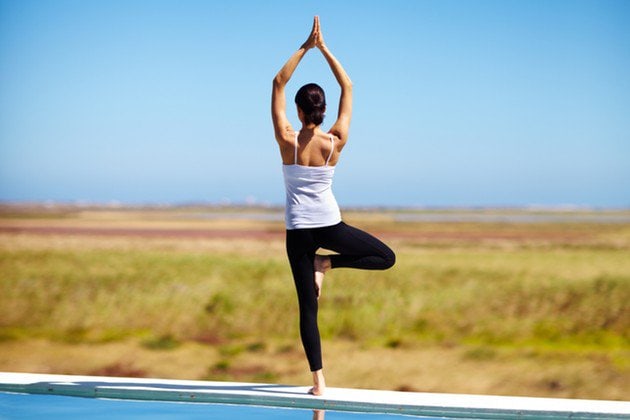When I first began practicing Bikram yoga, it was like no other yoga class I had ever taken. There are two sets of every posture, and each posture is held for a set amount of time. The posture is punctuated by coming back to stillness while breathing deeply no matter what we might be thinking or feeling.
The instructor recites a dialogue that guides the class.
In the beginning of my practice, I was uncertain of what came next. The instructor leads with their words and does not actually demonstrate. I found myself in halting awkward poses as I tried to follow the yogis around me. It was, however, very satisfying that there were two sets of everything.
I felt that I had a second chance. As I read more about the practice and began practicing regularly, I learned the purpose of two sets of each posture: One is a warm up and a gauge to determine where our bodies might be physically (and emotionally) for that particular day. The second set is where depth is executed.
Two sets can also be incredibly daunting in a 105 degree room. In extremely challenging postures (like balancing stick) I’ve had many exhausting moments, in which, I ask myself, “Do I really need to do that again? Seriously?”
As I started to learn the Bikram dialogue and I became familiar with the sequence of 26 postures, I felt like a yoga rock star because I began to know what came next. I would eagerly flow to the second set without waiting for the words of my instructor. I had one instructor that cut me down to size in a very “Bikram-esque” fashion. He reminded me once to wait for the words. The second time, he instructed the class to stop. “Everyone do that again because Nicole is having her own private class in the corner over there.” I remember asking myself what the big deal was. I knew what came next and isn’t yoga supposed to be about flow anyway?
After class, as I was trying to fit layers of clothes over my soaking wet skin, I sheepishly looked over at my instructor. He said something that I will never forget. As he explained that he wasn’t “power tripping” on me, he went on to express the importance of group energy. He also explained that active listening isn’t about simply doing postures in a hot room. I will not reap the benefits of building mental strength and determination if I’m in constant state of anticipation. Bikram yoga is meant to helps us push past our thoughts in a heated room and allow our bodies to open in practice. Practicing presence helps to re-train the mind not to react so quickly to emotional and physical discomfort.
This conversation with my instructor was an “ah-ha!” moment for me. Often in life we operate on auto-pilot. We ritualistically go about our lives; days flow into weeks and are often unremarkable. There have been times that I can’t even remember the ride to work (a clear sign of auto-pilot status). While that is often part of living, and some days we need to do just that; the practice of yoga is also a discipline in quieting the mind to allow spaciousness, in order to be fully present. As I educated myself in this ancient practice, I learned that the poses were traditionally meant to prepare the body for meditation.
By practicing yoga, we surrendering our thoughts and internal chatter helping us to evolve in relaxation and flow. This allows for a balanced body, mind, and spirit. Since that conversation with my instructor one year ago, and after several Bikram yoga challenges, I feel that have really progressed in this practice. Yoga has become about so much more than just a physical endeavor. It is a form of meditation, as well.
In life, often times, we need to come out of hibernation from our own mind and let out a great big roar against living a stagnant life of ritual. It’s easy to simply operate on auto-pilot- same old routine, same old reactions, same old thoughts… We can practice going deeper, just like in the second set of our postures. We can let go of control and honor our own abilities to the beauty of surrender. Yoga has helped me to become more actively aware and more mindful in my day to day life. I’m no longer going through class in anticipation. Now, I am learning to find that edge where the release of my scattered thoughts can transform, not only my body, but transition my conditioned mind to a state of awareness. As we rise to stand and begin our yoga practice we must remember why we commit to ourselves; whether it’s just for 90 minutes on our mat, or if we wish to hold onto the benefits day to day. We are not simply listening to a script that our instructors have memorized. We open our eyes, focus our eye gaze on ourselves, and go deeper. Our goal is an internal shift to presence. Not ritual.
We can focus on “being” rather than “doing.”
“Life’s a journey, not a destination.” Ralph Waldo Emerson


